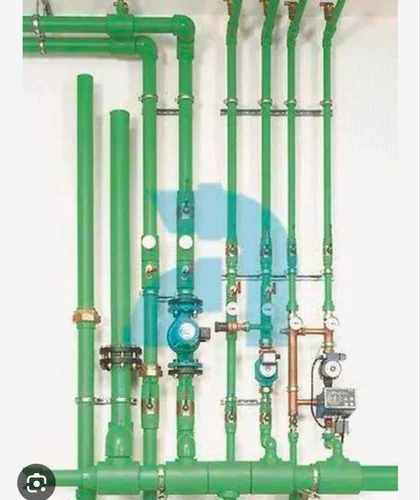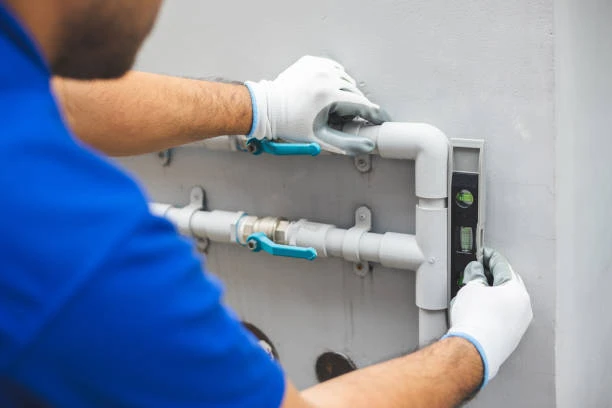Introduction
Choosing between CPVC (Chlorinated Polyvinyl Chloride) and PPR (Polypropylene Random Copolymer) piping systems NBR 15884 in 2024 depends on various factors such as the application, budget, and specific performance needs. Both piping materials are widely used in plumbing, HVAC, and industrial applications, but they each have unique properties that may make one more suitable for your project than the other.
Key Differences Between CPVC and PPR Piping
Temperature Resistance
- CPVC: Known for its higher temperature resistance, CPVC can handle temperatures up to 200°F (93°C), making it ideal for hot water systems and industrial applications where high temperatures are common.
- PPR: PPR can tolerate temperatures up to 95°C (203°F) and is suitable for both hot and cold water systems. It is often used in residential and commercial plumbing systems. Well as industrial settings that don’t require extremely high temperatures.
Chemical Resistance
- CPVC: Offers excellent chemical resistance. Particularly in industrial applications .
- PPR: Also highly resistant to many chemicals, but its resistance is generally not as strong as CPVC for highly aggressive substances.
- Pressure Handling
- CPVC: Performs well under moderate to high pressure, but its pressure rating decreases at elevated temperatures. It’s ideal for water distribution, but high-pressure steam applications may reduce its lifespan.
- PPR: PPR pipes, especially in higher ratings like PN20 and PN25. Designed to handle high pressure without degradation. PPR’s pressure-handling capability remains strong even at higher temperatures, making it a good fit for both hot and cold water systems.

- Durability and Longevity
- CPVC: CPVC pipes are durable but may become brittle over time, especially with prolonged exposure to UV light or when used in high-temperature conditions. However, with proper installation and maintenance, CPVC piping can last around 50 years.
- PPR: Known for its superior durability and flexibility, PPR pipes can last over 50 years with minimal maintenance. The material remains flexible even in lower temperatures, which reduces the risk of cracks or breaks.
- Ease of Installation
- CPVC: Installation of CPVC piping typically requires solvent cement welding. While this creates a strong bond, it can be more time-consuming compared to other methods, and the joint strength depends on proper technique.
- PPR: PPR pipes are typically installed using heat fusion welding. Leak-proof joint. This method is often considered faster and more reliable than.
- Cost
- CPVC: Typically, CPVC pipes are more expensive than PPR due to their chemical resistance and ability to handle higher temperatures. However, for specific industrial applications, this added cost can be justified.
- PPR: PPR pipes are generally more cost-effective, especially for residential plumbing and water supply systems. The lower material and installation costs make it an attractive option for large projects.
Applications of CPVC vs. PPR in 2024
- CPVC is better suited for:
- Hot water supply in residential, commercial, and industrial applications.
- Industrial applications with exposure to aggressive chemicals.
- Fire sprinkler systems due to its heat resistance.
- PPR is better suited for:
- Potable water supply systems, both hot and cold.
- Heating systems, such as underfloor heating or HVAC systems.
- Irrigation systems in agriculture.
- Industrial applications with moderate chemical exposure and high-pressure needs.
Environmental Considerations
Both CPVC and PPR are recyclable, but PPR is often viewed as the more eco-friendly option due. To its lower carbon footprint during production and its fully recyclable nature. CPVC, while also recyclable, can release harmful chlorine-based compounds if improperly disposed of.
Conclusion
In 2024, choosing between CPVC and PPR piping depends largely on the specific needs of your project. If you need piping for high-temperature, chemically aggressive environments, CPVC may be the better choice due to its superior temperature and chemical resistance. On the other hand, if you’re looking for a more cost-effective, durable, and eco-friendly solution for general plumbing, heating, or water supply systems, PPR is likely the best option.
Before making a decision, consider the type of application, pressure and temperature requirements, budget, and long-term sustainability goals. Both materials are reliable, but the right choice will maximize the efficiency and longevity of your system.

















